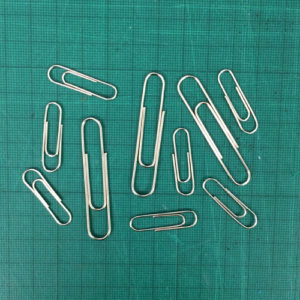I’m a full time artist/printmaker living in South West Scotland. I moved to Port William in 2006 following redundancy to pursue an ambition to make a living
from art. I was very interested in natural history and I particularly liked wildlife art, so I set out to make prints of the local landscape and wildlife.

Describe your process.
Because I use a wide variety of print media I start the design process by deciding what sort of print to make. Each medium has its strengths and weaknesses
which can help with this decision.
Two years ago I was fortunate enough to acquire a Columbian relief printing press which means that I can print in multiple passes and keep work in register.
Since then I have become fascinated by reduction linocut.
I start the design by assembling a number of my own photos which are like a sketchbook to me. I use these to create an imaginative design which is typically
very far removed from the photographic images.I simplify and rearrange elements repeatedly until I have a pleasing design. Typically this will be a
group of birds or a landscape.
When I am happy with the drawing I use carbon and tracing paper to reverse it onto the plate before beginning to plan the colour printing sequence.

How and where did you learn to print?
I retained an amateur interest in art during the years when I was working as a civil servant and in 1991 I started to attend evening classes in etching
in Cheltenham.I did two terms a year for more than ten years and in 1998 I bought an etching press.
Following redundancy, when I started to assemble my studio in Scotland, I ran into some technical difficulties in setting up an etching workshop, so I
began to explore other types of printmaking starting with wood and linocuts. I then taught myself how to make collagraphs and monotypes. And finally,
I solved the etching problem and resumed that too!

Why printing?
I am attracted to the surface qualities of prints which are quite unique and difficult to replicate with paint. In particular I like flat areas of colour
and increasingly enjoy using these (rather than lines) to define images in my linocuts.

Where do you work?
I work in a room in the house which I converted into a studio when we moved in nearly eleven years ago. It is the largest room in the house (also the coldest!)
and now contains two presses as well as quite a wide variety of printmaking tools and materials.

Describe a typical day in your studio.
I don’t have to walk to work so I do try to clear my head and get some exercise by walking along the beach to the edge of the village before I settle down
to work. During the summer I find I have very little time to be creative as I do my own framing and am also quite preoccupied with supplying galleries
and exhibitions. But in the winter I light the stove and settle down to a day of drawing or cutting or printing.I must admit it feels like an immense
privilege! I listen to Radio 4 or music depending on my mood and I work right through the day, usually on one piece at a time.

What inspires you?
I am inspired by nature, especially birds, and by the landscape of Scotland. One of the reasons we chose to move to this very remote part of Scotland is
its natural beauty and bird-life.
I also think it’s important to look at work by other printmakers and I particularly enjoy printmakers of the early 20th Century such as Edward
Bawden and Cyril Power. I also enjoy contemporary wildlife art.
What is your favourite printmaking product?
My favourite printmaking product (apart from my Columbian Press of course!) would have to be those Ternes Burton registration pins and tabs which after 10 years of frustration have completely changed my approach to printmaking.

What have you made that you are most proud of?
I am most proud of a print I made of Hooded Crows in 2015 which somehow achieved what I wanted it to.It has a pleasing simplicity and flatness but it also
tells you all about Hoodies.

Where can we see your work? Where do you sell and teach?
My work is available online and at galleries in various places (listed on my website) throughout the UK. I also exhibit at the British Birdwatching Fair annually and in other temporary exhibitions and
events. I have quite an active Facebook presence (Lisa Hooper- Hoopoe Prints).
I teach printmaking in small workshops from home during the winter months and I have just published my second book on printmaking (very much a “How
to” guide, called Printing Wildlife. That book is available in hardback and paperback (price £20 and £15 respectively) from my website and
from booksellers on and offline. My earlier book First Impressions, which is a little bit more discursive and autobiographical, is also still
available, (price £38).

What will we be seeing from you next?
I have been experimenting with the use of cardboard and children’s foam sheets for printing colour behind a linocut or woodcut. The Shovellers above were
printed using a cardboard plate with the ducks cut out for the water, a cardboard plate with foam pieces stuck onto it for the colours in the birds’
plumage and a single lino plate inked with a dabber and rollers for all the rest.
Do you have any advice for other printmakers and creatives?
Try to keep being experimental and moving on. Sometimes it can be hard to be playful because of the fear of failure, but don’t let this cramp your style.
To see more of Lisa’s work visit her website or facebook page.




































































































